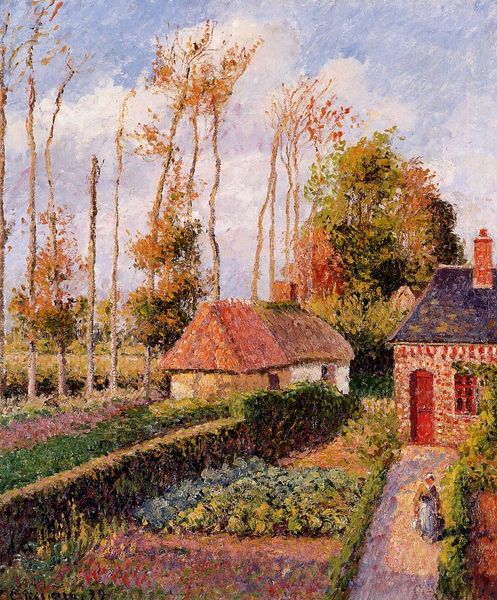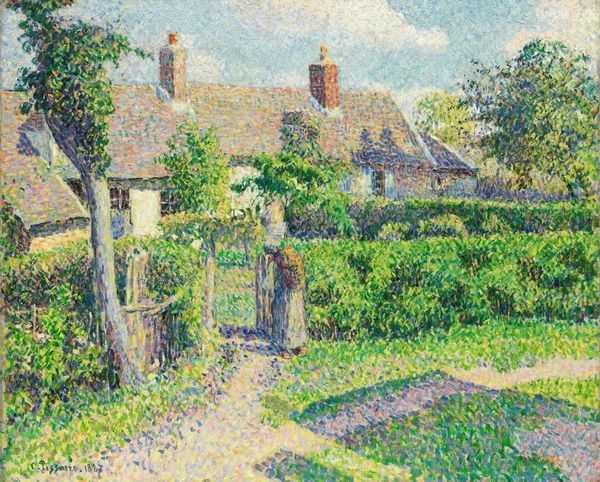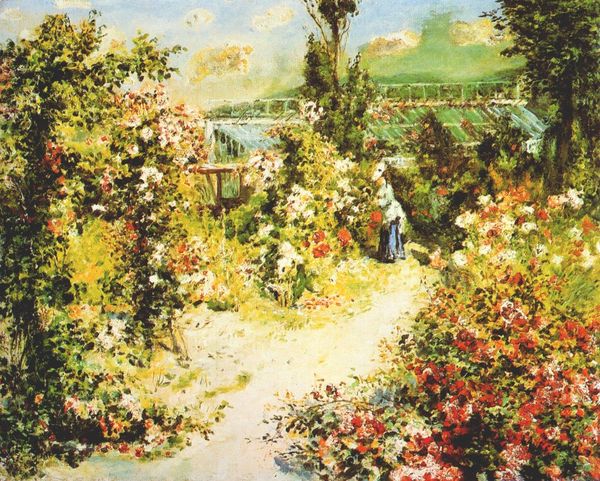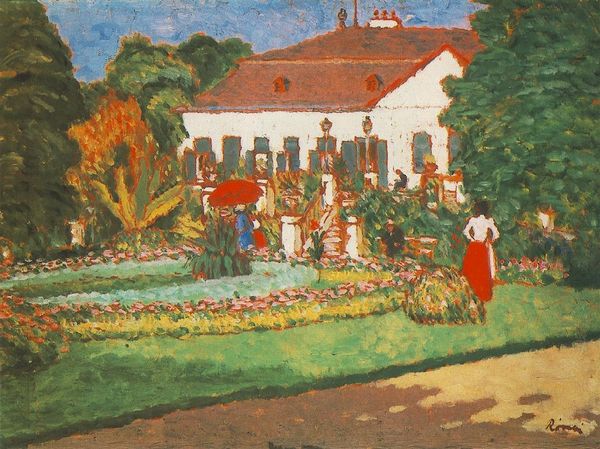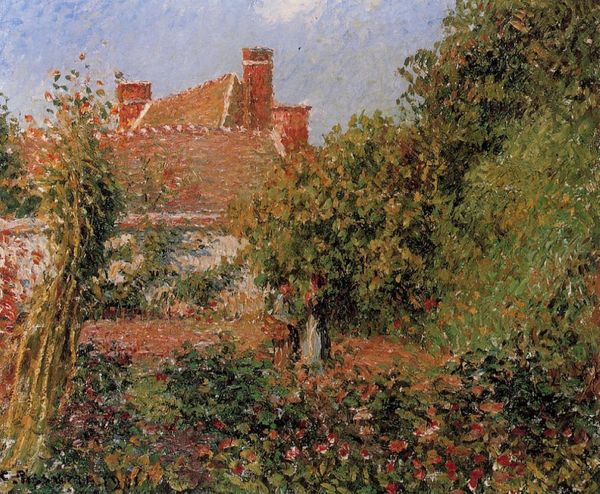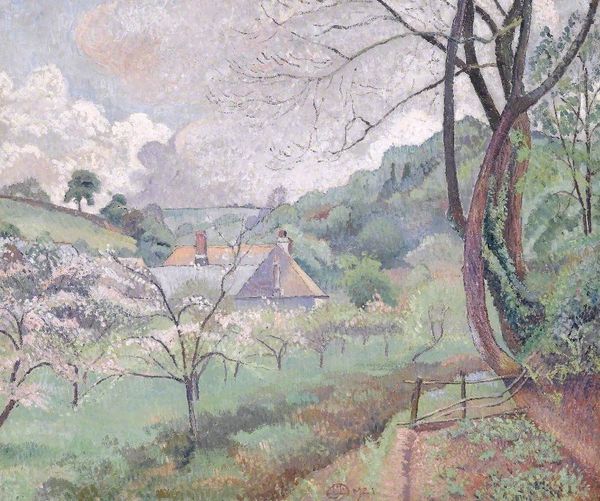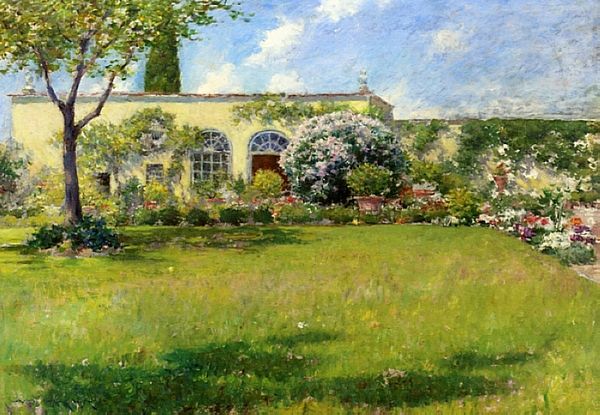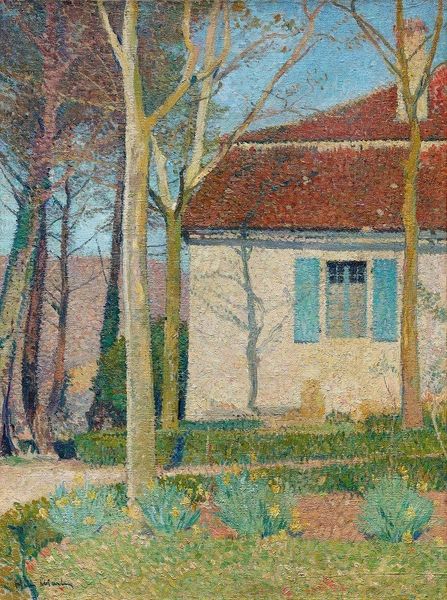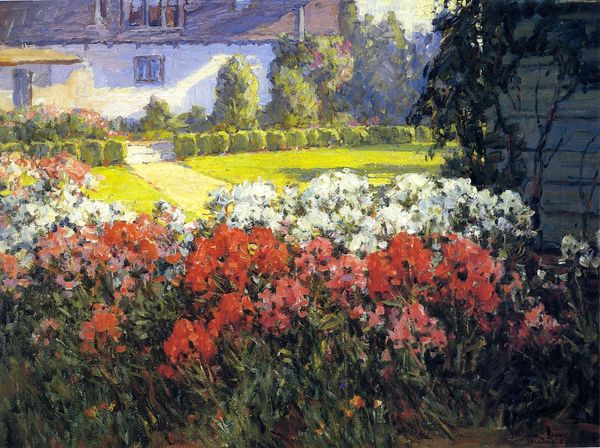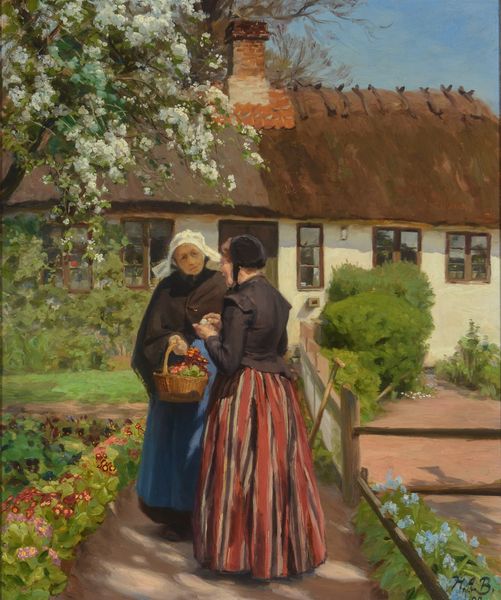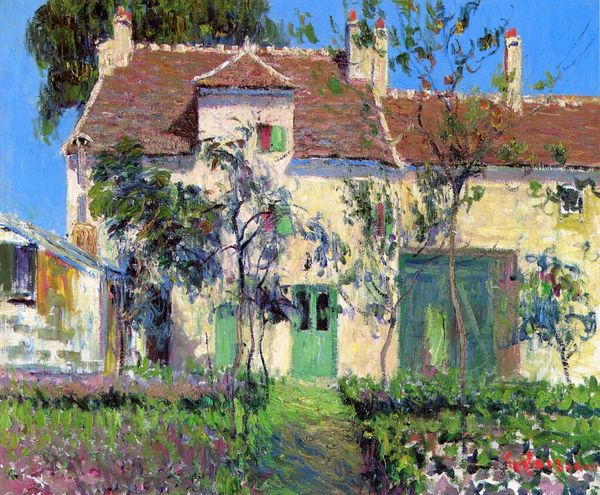
Copyright: Public Domain: Artvee
Editor: "Dahlias, Garden at Petit Gennevilliers," painted by Gustave Caillebotte in 1893 using oil paints, offers such a serene view! I’m immediately drawn to how the dahlias almost seem to guard the scene, partially obscuring our view into the garden. What symbols do you see within the ordinary scenery? Curator: Well, let’s consider the dahlia itself. During the Victorian era, which corresponds with Caillebotte's time, dahlias symbolized dignity and elegance, but they could also hint at instability or betrayal in relationships, based on color. Look at their arrangement. Are they truly guarding, or perhaps concealing, a certain domestic tension or societal expectation inherent in that period’s idea of “leisure”? Editor: That’s fascinating. So the dahlia, a seemingly innocuous flower, could hint at more complex societal undertones? How about the greenhouse in the background? Curator: Exactly. And notice the greenhouse - an artificial, controlled nature. Greenhouses represent a desire to extend seasons, to cultivate even against natural rhythms. It embodies humanity's ambition, a curated Eden. In that time, this greenhouse could be symbolic of progress or an idealized space for affluent leisure. Caillebotte almost stages the natural versus artificial…a constant theme of progress and identity. Does the way Caillebotte applies paint evoke something for you? Editor: The broken brushstrokes do feel very of-the-moment, like fleeting impressions, giving a sense of how time changes all of these elements that might represent something fixed. Curator: Yes, exactly. The ephemeral nature of Impressionism layered against those very static Victorian symbols. And those colors? They might convey an emotional mood—the cool blues of isolation against the vibrant reds suggesting suppressed passion or anger, given the language of flowers. Caillebotte invites us into not only a garden but also the subconscious of a specific era. Editor: This makes me appreciate Caillebotte’s work in a totally new way, moving beyond a simple pleasant painting! Curator: Indeed! Seeing the image now only hints to those underlying societal dialogues makes Caillebotte's legacy even richer.
Comments
No comments
Be the first to comment and join the conversation on the ultimate creative platform.
